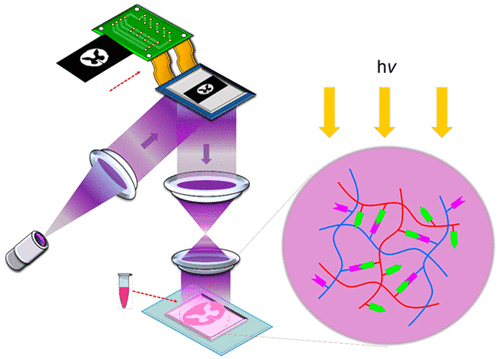当前位置:
X-MOL 学术
›
Chem. Rev.
›
论文详情
Our official English website, www.x-mol.net, welcomes your feedback! (Note: you will need to create a separate account there.)
Photopolymerizable Biomaterials and Light-Based 3D Printing Strategies for Biomedical Applications.
Chemical Reviews ( IF 62.1 ) Pub Date : 2020-04-23 , DOI: 10.1021/acs.chemrev.9b00810 Claire Yu 1 , Jacob Schimelman 1 , Pengrui Wang 2 , Kathleen L Miller 1 , Xuanyi Ma 3 , Shangting You 1 , Jiaao Guan 4 , Bingjie Sun 1 , Wei Zhu 1 , Shaochen Chen 1, 2, 3, 5
Chemical Reviews ( IF 62.1 ) Pub Date : 2020-04-23 , DOI: 10.1021/acs.chemrev.9b00810 Claire Yu 1 , Jacob Schimelman 1 , Pengrui Wang 2 , Kathleen L Miller 1 , Xuanyi Ma 3 , Shangting You 1 , Jiaao Guan 4 , Bingjie Sun 1 , Wei Zhu 1 , Shaochen Chen 1, 2, 3, 5
Affiliation

|
Since the advent of additive manufacturing, known commonly as 3D printing, this technology has revolutionized the biofabrication landscape and driven numerous pivotal advancements in tissue engineering and regenerative medicine. Many 3D printing methods were developed in short course after Charles Hull first introduced the power of stereolithography to the world. However, materials development was not met with the same enthusiasm and remained the bottleneck in the field for some time. Only in the past decade has there been deliberate development to expand the materials toolbox for 3D printing applications to meet the true potential of 3D printing technologies. Herein, we review the development of biomaterials suited for light-based 3D printing modalities with an emphasis on bioprinting applications. We discuss the chemical mechanisms that govern photopolymerization and highlight the application of natural, synthetic, and composite biomaterials as 3D printed hydrogels. Because the quality of a 3D printed construct is highly dependent on both the material properties and processing technique, we included a final section on the theoretical and practical aspects behind light-based 3D printing as well as ways to employ that knowledge to troubleshoot and standardize the optimization of printing parameters.
中文翻译:

用于生物医学应用的光聚合生物材料和基于光的 3D 打印策略。
自从增材制造(通常称为 3D 打印)出现以来,这项技术彻底改变了生物制造领域,并推动了组织工程和再生医学领域的众多关键进步。在查尔斯·赫尔 (Charles Hull) 首次向世界介绍立体光刻技术的力量后,许多 3D 打印方法在短期内得到了发展。然而,材料开发并没有得到同样的热情,并且在一段时间内仍然是该领域的瓶颈。仅在过去十年中,人们才进行了刻意的开发,以扩展 3D 打印应用的材料工具箱,以满足 3D 打印技术的真正潜力。在此,我们回顾了适合光基 3D 打印模式的生物材料的开发,重点关注生物打印应用。我们讨论了控制光聚合的化学机制,并重点介绍了天然、合成和复合生物材料作为 3D 打印水凝胶的应用。由于 3D 打印结构的质量高度依赖于材料特性和加工技术,因此我们在最后一节介绍了基于光的 3D 打印背后的理论和实践方面,以及利用这些知识来解决问题并标准化的方法。优化打印参数。
更新日期:2020-04-23
中文翻译:

用于生物医学应用的光聚合生物材料和基于光的 3D 打印策略。
自从增材制造(通常称为 3D 打印)出现以来,这项技术彻底改变了生物制造领域,并推动了组织工程和再生医学领域的众多关键进步。在查尔斯·赫尔 (Charles Hull) 首次向世界介绍立体光刻技术的力量后,许多 3D 打印方法在短期内得到了发展。然而,材料开发并没有得到同样的热情,并且在一段时间内仍然是该领域的瓶颈。仅在过去十年中,人们才进行了刻意的开发,以扩展 3D 打印应用的材料工具箱,以满足 3D 打印技术的真正潜力。在此,我们回顾了适合光基 3D 打印模式的生物材料的开发,重点关注生物打印应用。我们讨论了控制光聚合的化学机制,并重点介绍了天然、合成和复合生物材料作为 3D 打印水凝胶的应用。由于 3D 打印结构的质量高度依赖于材料特性和加工技术,因此我们在最后一节介绍了基于光的 3D 打印背后的理论和实践方面,以及利用这些知识来解决问题并标准化的方法。优化打印参数。



























 京公网安备 11010802027423号
京公网安备 11010802027423号